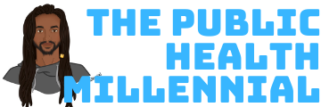46% of the governmental public health workforce left (between 2017 and 2019).
The top reasons for leaving the public health workforce were:
- Pay – 46%
- Work overload/burnout – 41%
- Lack of opportunities for advancement – 40%
- Stress – 37%
- Organizational climate/culture – 37%
In 2021, there was a 80,000 governmental public health workforce shortage.
Public health workforce challenges continues to be a wicked problem.
My Public Health Story
I only found public health out of a worry of not getting into a masters program. I got rejected from 3 of the 4 masters of medical sciences programs I applied to. As I got my third rejection, my path from graduating with a bachelors degree in biology to pursue a medical degree got murkier.
One day an ad for a Masters of Public Health program appeared on my facebook feed in 2017. I can’t even remember if it was for University of Florida or from The George Washington University (the two schools I applied to). But what I did not know at the time, was that public health was going to be the path for me.
I got acceptances for both MPH programs and the last master of medical sciences program I applied for. It was a hard decision, however I decided to pursue an MPH at UF. With the thought process of applying to medical schools while I complete my MPH.
The shift
Two weeks into coursework, I gave up on my dream to become a physician; I knew public health was for me. My new dream was to make an impact as a public health professional.
My shift in short was because I had never known the magnitude of the inequities of health care and health in the US. Furthermore, I didn’t know there was a field dedicated to addressing not only these inequities, but also ensuring that populations of people, especially marginalized people, are healthy.
I was sold.

Too often we fall into public health. I wish I had been exposed to public health earlier. I continue to work to expose others to the field of public health. Because learning about public health as a career path changed me – for the better.
[Need career support, want to build your brand – join our community]
Overview of Public Health Workforce
Let’s help you understand the makeup of the public health workforce at the moment.

Demographics breakdown of the public health workforce:
- 51% are White
- 79% identify as Female
- 63% are 40 years or older
- 25% are under 25 years old
- 74% have at least a bachelors degree
- 14% have a public health degree whether bachelors or masters
- 22% say their mental health is “fair” or “poor”
If you want more demographic or other public health workforce data, check out PH Wins by the de Beaumont Foundation.
Mechanism of Public Health Workforce Shortages
The mechanisms describe the dynamics creating the public health workforce shortages. Mechanisms that support the growth of the public health workforce. Mechanisms that decrease the public health workforce.
Retention + Recruitment
- Mental health supports
- Marketing and advocacy efforts
- Intentional recruitment + creation of pathways
- Retain staff (organizational culture, growth opportunities, learning opportunities)
Leaving
- Retirement
- Folks staying longer in roles (less opportunity)
- 27% of staff planned to leave (not because of retirement)
- Pay, work overload/burnout, lack of advancement opportunities
Creating a thriving public health workforce requires we ensure that there is more ‘retention + recruitment’ of public health workers than those who are ‘leaving’.
[Work With Us – if you need workforce technical assistance for your public health department or agency]
Where do public health graduates end up?
The top place of employment for public health graduates is in for-profit organizations (for Bachelors) and health care (for masters).
There were 140,000 undergraduate public health degree awarded over the last 20 years – with 18,289 bachelors graduates in 2020. There were 18,004 master level graduates. An increase from 5,000 over the last 20 years.

Bachelors public health graduates end up in:
- For profit – 28%
- Health care – 27%
- Non-profit – 12%
- Academic institution – 10%
- Government – 10%
Master public health graduates end up in:
- Health care – 29%
- For profit – 21%
- Government – 19%
- Academic institution – 18%
- Non-profit – 12%
Overall public health graduates are most likely to end up in either 1) for profit organizations; 2) health care organizations.
Only 10% of public health undergraduates end up in governmental public health. Compared to 19% for master level graduates.
Many of the reasons for persons leaving governmental public health are the same reasons students elect not to find employment in governmental public health. This is further exacerbated by lengthly governmental public health job recruiting practices.
Needs for recruitment and retention in governmental public health
There is and will continue to be a huge need for efforts to recruit and retention governmental public health staff.
As I shared earlier, 46% of staff left between 2017 and 2019. The two groups leaving at the most alarming rates are:
- 77% of those with 5 or less years of experience
- 74% of those that are 35 years old or younger
It is evident that governmental public health is losing some of its young and brightest workers.
We need to curb this drain. How can we make public health departments welcoming to newcomers in the public health workforce?

In order to better address this outflow, we need to first find mechanism to address why current public health workers are leaving. While simultaneously putting in place strategies to increase the recruitment rate for public health workers – especially younger ones.
[Work With Us – if you need workforce technical assistance for your public health department or agency]
The top 5 reasons for staying in the workforce
Overall the top reasons people stay in the public health workforce are: Benefits, Job stability, Satisfaction with your supervisor, flexibility, and job satisfaction.
Top 5 reasons for staying in the governmental public health workforce (by age groups)

For those, 35 years and younger, they stay in the public health workforce because of:
- Benefits
- Job stability
- Satisfaction with their supervisor
- Flexibility
- Job satisfaction
For those, 34-64 years, they stay in the public health workforce because of:
- Benefits
- Job stability
- Flexibility
- Satisfaction with their supervisor
- Job satisfaction
For those, 65 and older, they stay in the public health workforce because of:
- Job satisfaction
- Benefits
- Pride in the organization and its mission
- Flexibility
- Satisfaction with their supervisor
There are no real generational difference for staying in a public health jobs. Public health people are mission-driven at all stages of their careers. They appreciate the job stability, job satisfaction, benefits, pride in org, meaningful work.
How to retain young professionals?
- Opportunities for advancement most important (more than doubly important) for those 35 years and younger compared to other age groups.
- Training opportunities most important (more than doubly important) for those 35 years and younger compared to other age groups.
- Mentorship opportunities most important (more than doubly important) for those 35 years and younger compared to other age groups.
[Need career support, want to build your brand – join our community]
Perceptions and Themes of Governmental Public Health
Understanding perceptions of students on governmental public health is essential to tailor solutions to the current problem. A study was conducted to better understand students perceptions of governmental public health.
Student participants shared positive job attributes including fulfilling, meaningful work; working at a mission-driven organization; and the opportunity to make an impact in their community. On the more negative perceptions, governmental public health was viewed as bureaucratic; lacking innovation; and underresourced.
Students also shared that it is difficult to find and apply to relevant job postings.

In order to meet the students where they are at, we need to continue to understand the perceptions and feelings towards governmental public health. It’ll be even more helpful to understand these perceptions specific to a geographic area to see how perceptions shift depending on location.
Needs for a thriving workforce
For a thriving public health workforce, we must ensure that both retention and recruitment mechanisms are working stronger than the outflow of qualified public health workers.
We are in a moment, where there needs to be tactical shifts to ensure that we have the public health workforce to tackle the challenges we face today. Until the workforce challenges are solved, public health will continue to struggle to keep people healhy and show its worth to the public.
Recruitment
Recruitment is about ensuring that there is a healthy flow of persons into public health roles. These can be students, other public health professionals, and those switching into the public health workforce.
Remember that only 14% of current public health staff held a public health degree.

Some ways to ensure better recruitment include, but are not limited to,:
- Pathways from college
- Internships for students
- Reasonable hybrid work
- Marketing of values and goals
- Constant opportunities to grow
- County or regional workforce networks
- Pathways for community health workers
- Networking events to gain exposure to public health
What are other ways we can bolster recruitment efforts?
Retention
Retention on the other hand is about ensuring that the current public health workforce stays (or is retained).
There are inherent retention needs that have been identified from those staff members that were leaving.

Some ways to ensure better retention include, but are not limited to,:
- Mentorship
- Positive work culture
- Mental health supports
- Clear paths for promotions
- Supportive management
- Higher pay; pay increases, benefits
- Individualized professional development plans
What are additional levers that can be used for better governmental public health retention?
[Work With Us – if you need workforce technical assistance for your public health department or agency]
Strategies for a thriving public health workforce
Public health workforce challenges have existed for decades. It is not going to be solved overnight. It may not even be solved in a few years.
90,000 public health professionals left their workforce (from 1980 to now). In 2021, there was a 80,000 public health workforce shortage. It’s estimated that the shortage will increase to 100,000 by 2025.
One thing is clear, in order to have a healthier country, we need to solve the issue of public health workforce shortages.
Strategies that should be implemented should focus on short, medium, and long term impacts and outcomes
Short-term
- Assess staff, consistently
- Mentorship pathways (internal)
- Streamline hiring (to extent possible)
- Identify available training opportunities
- Communicate public health to neighbor
- Become a champion for public health workforce
- Intentionally connect with community stakeholders
Medium-term
- Other benefits (health related)
- Mental health support benefits
- Hybrid and flexible work schedules
- Pathways – external mentorship and internships
- Tailored professional development plans for each staff
- Monitor and track public health data (statewide or regionally)
- Intentional recruitment pathway (students & community members)
- Reduce burden of student debt (loan forgiveness, scholarships, tuition rem.)
- Active community networking (High school, community colleges, HBCUs, Universities, CBOs)
Long-term
- Build a strong culture within your public health departments
- Continuous marketing, continuous conversation in community
- Identify and pursue funding mechanisms at state and local level
- Advocate for higher federal wages and streamlined hiring practices
- Intentional promotion practices for leaders (not just technically expertise)
- Monitor and track public health workforce data (statewide, regionally, nationally)
While many public health departments are taking strong strides to improving the public health workforce, there is still a lot work to be done.



